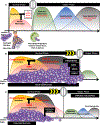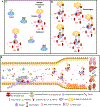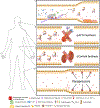Necrotizing Fasciitis: Pillaging the Acute Phase Response
- PMID: 31977818
- PMCID: PMC8590823
- DOI: 10.2106/JBJS.19.00591
Necrotizing Fasciitis: Pillaging the Acute Phase Response
Figures




References
-
- Stevens DL, Bryant AE. Necrotizing soft-tissue infections. N Engl J Med. 2017. December 7;377(23):2253–65. - PubMed
-
- An TJ, Benvenuti MA, Mignemi ME, Thomsen IP, Schoenecker JG. Pediatric musculoskeletal infection: hijacking the acute-phase response. JBJS Rev. 2016. September 27;4(9):01874474–201609000-00001. - PubMed
-
- Hippocrates. De morbis popularibus, epidemics III. Harvard University Press; 1868.
-
- Jones J. Investigations upon the nature, causes, and treatments of hospital gangrene, as it prevailed in the Confederate armies, 1861–1865. New York: Surg Mem War Rebellion; 1871.
Publication types
MeSH terms
Grants and funding
LinkOut - more resources
Full Text Sources

